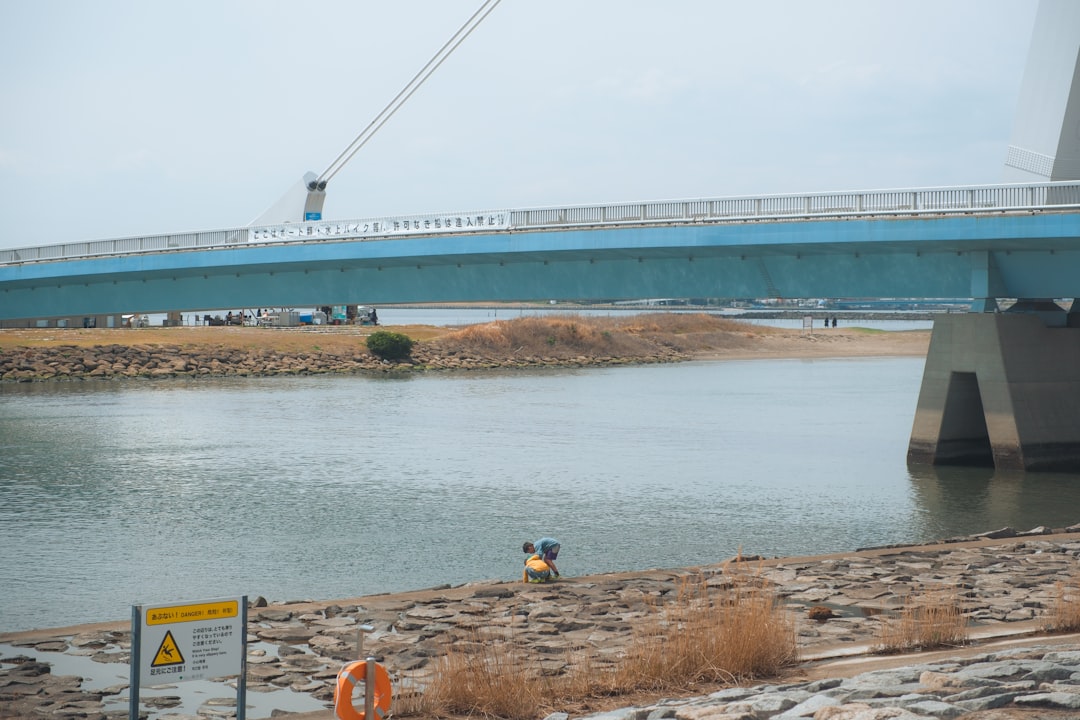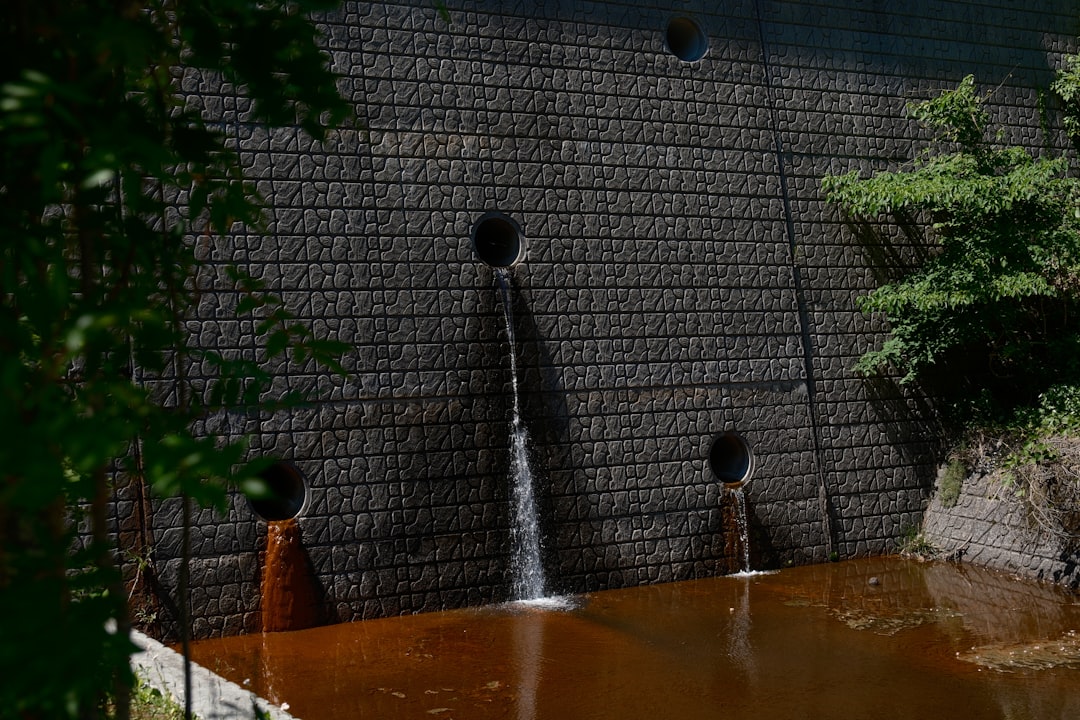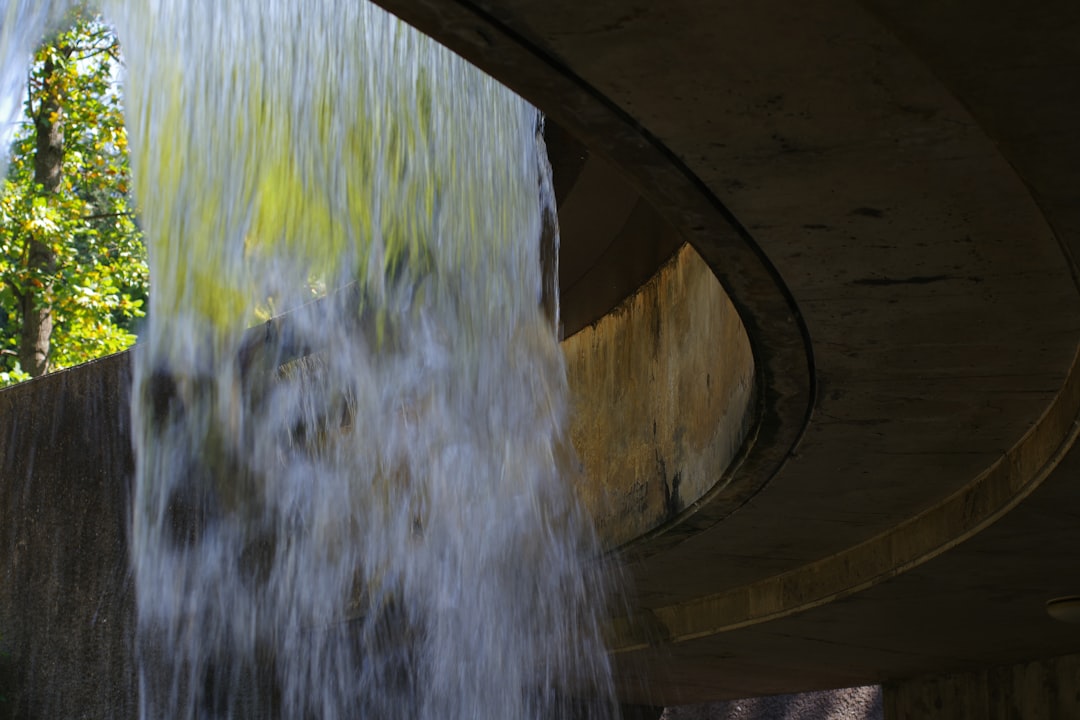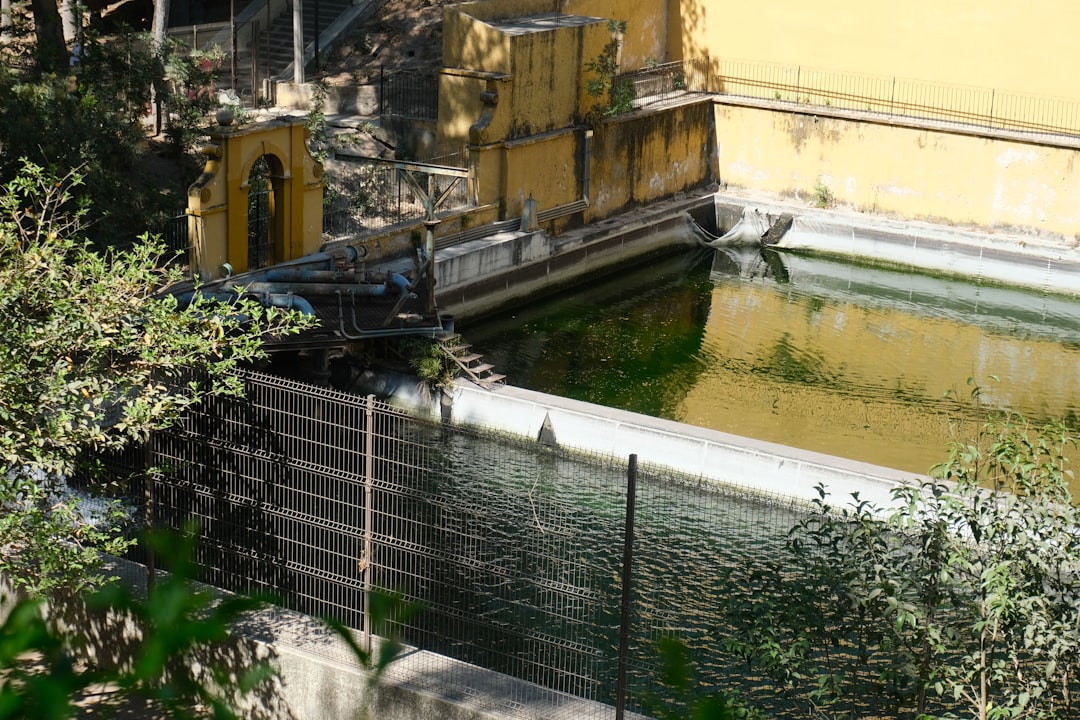

Engage prospects with a scan and streamline customer engagement with FREE QR code marketing tools by Sona – no strings attached!
Create a Free QR CodeFree consultation

No commitment

Engage prospects with a scan and streamline customer engagement with FREE QR code marketing tools by Sona – no strings attached!
Create a Free QR CodeFree consultation

No commitment
Water works contractors face a distinct set of operational challenges, from bridging disconnected field and office processes to maintaining precise regulatory compliance and delivering a seamless experience for clients and stakeholders. The mounting pressure to modernize often collides with legacy workflows: printed brochures go out of date, handwritten logs are forgotten, and manual data capture leads to incomplete or missing account records and lost opportunities.
QR codes in marketing have emerged as a practical bridge, transforming physical job sites, signage, and documentation into interactive, data-rich entry points. By embedding scannable codes on field assets, vehicles, proposals, and safety notices, contractors can instantly share the latest project information, simplify on-site check-ins, verify compliance documents, and collect vital engagement data, circumventing the costly inefficiencies of outdated tools and eliminating the risk of high-value activity going untracked.
This guide explores how water works contractors can leverage QR code technology to resolve workflow bottlenecks, reduce compliance gaps, and create more transparent project management, driving measurable gains in safety, regulatory adherence, and client satisfaction.

Paper-heavy, manual processes slow down workflow and lead to missed interactions and invisible project milestones. Crews juggle binders, clipboards, and outdated prints, while office teams attempt to reconcile field activity days or weeks later. Water works contractors regularly struggle with incomplete or outdated account records, making it difficult to personalize communication or follow up on stalled projects. QR codes become the linchpin for modernizing these environments, giving team members and clients unbroken access to digital project assets and actionable next steps while surfacing critical engagement signals that might otherwise remain hidden.
Modernization is not just about replacing paper with pixels; it is about building a continuous loop between the field and the office. When a code placed on a gate, a pump, or a plan set links to a dynamic destination, your team can update content once and ensure every stakeholder sees the latest version. With a centralized platform such as Sona QR, you can also standardize design and tracking, integrate scan events with your CRM or project tools, and move from scattered reporting to accountable, data-informed decisions.
Here is how to make the shift:
For contractors grappling with missed segmentation and disconnected data, solutions that connect QR scans directly to CRM records allow for richer insights and improved lead nurturing. When every scan captures context like location, time, and content type, your team can prioritize follow-up, prevent high-value prospects from slipping through the cracks, and ensure renewal-ready clients receive timely, relevant outreach.

Every water works project contains dozens of moments where information is requested, captured, or verified. In a manual world, these moments are easy to miss. Crews forget to sign in, paper maintenance logs get smudged or lost, and plan revisions do not reach the right people in time. QR codes create a reliable bridge so analog touchpoints become digital actions, captured at the point of work.
Consider frequent friction points. Requests for information that once required phone calls or emails can be submitted on the spot through Google Forms QR codes, with auto-routing to the responsible engineer. Static safety binders can be replaced with QR-linked content that is always current, and your team can lock critical documents behind role-based access if needed. The result is fewer delays, fewer errors, and a more complete system of record that is ready for audits and client reviews.
The water works sector excels when teams can move easily between on-site execution and back-office management. Traditional communication and data capture methods often result in anonymous interactions and missed follow-ups, especially on projects that span multiple sites, subcontractors, and inspection cycles. Across the industry, contractors report recurring challenges that stifle performance and inflate risk when left unaddressed.
Two issues recur: gaps between offline touchpoints and digital engagement, and delays caused by manual checks or stale documents as regulations shift mid-project. Field signage, equipment tags, and permits function as silent placeholders without a fast path to action. Similarly, printed instructions no longer match evolving site conditions, creating confusion and rework. QR-enabled workflows address these shortcomings directly by bringing the right information to the right person at the right time, with scan data proving who engaged.
QR codes help address these frustrations by:
In an environment where incomplete or outdated account info can hinder personalization and result in missed upsell or cross-sell opportunities, QR code data tied to CRM enrichment offers a critical edge. Teams can pinpoint which clients engaged with maintenance plans, which inspectors accessed documentation, and which projects need follow-up on training gaps, all through a unified dashboard such as Sona QR.
Fragmented data capture and siloed workflows can prevent contractors from knowing which crews, clients, or inspectors are engaging with which materials and when. Choosing the right QR format ensures that every scan leads to a task, a record, or a relationship that moves work forward and proves value during audits and reviews.
Focus on formats that map to the realities of field work. For example, forms eliminate the uncertainty of paper sign-ins, while vCards make it easy for stakeholders to reach the correct superintendent during urgent situations. Wi-Fi access can stabilize connectivity on remote sites where mobile signal is inconsistent, helping teams use cloud-based apps without delay. App download links simplify onboarding for specialized tools such as safety training or inspection reporting.
Dynamic QR codes are essential when updates are frequent or when segmentation and analytics matter. They allow contractors to pivot quickly as project needs evolve, adjust destinations without reprinting, and see exactly which codes, locations, and audiences drive outcomes. With Sona QR, dynamic codes can be edited centrally and tracked consistently across placements.

Water works contractors frequently risk missing key growth or compliance opportunities because physical and digital channels are not integrated. The audiences you want to reach are already walking past your signs, reading your proposals, and operating your equipment. Without a scan-to-action path, their interest and activity go unrecorded, and you lose insight into where to invest time and budget.
Strategic placement of QR codes converts these everyday surfaces into measurable gateways. As you design your placements, consider the information needs and motivations of each audience at each location. On a gate, compliance is top of mind. On a proposal, clarity and confidence drive decisions. On equipment, availability of maintenance records protects uptime and safety. Tailor both the QR destination and the call to action to match these moments.
Targeting these touchpoints brings higher-value prospects into view and enables follow-up that is timely and relevant. Over time, you will see patterns in scan behavior that reveal which sites, service lines, or regions are primed for growth and which need education or operational support.

Missed or poorly tracked field engagement can lead to costly mistakes: a broken system for maintenance logs, gaps in safety compliance, or fragmented client communications. QR codes address these failures at the source by connecting physical actions with digital tracking and workflow automation.
Start with three proven applications that have immediate impact on safety, uptime, and client experience. Each use case can be launched on a single site, then scaled across your portfolio with minimal additional cost. With dynamic codes and a centralized platform, it is easy to update destinations, refine forms, and compare performance across projects.
Each use case transforms a formerly anonymous moment into a measurable interaction. That is the foundation of improved compliance, smarter resource allocation, and better customer experience across water distribution, wastewater, and stormwater projects.
One of the challenges for water works contractors is that many high-fidelity interactions occur away from web forms and may never enter the CRM. Safety checks at a gate, a supervisor’s review of updated plans, or a client scanning a detour map are often lost to the ether. QR codes can change that by capturing intent, context, and identity signals that feed ongoing marketing and operations.
Segmentation begins with intent. When you issue different codes for safety, compliance, project updates, and proposals, you build distinct audiences around real behavior rather than assumptions. This improves the relevance of your follow-up. It also allows leadership to see which initiatives resonate and which require attention, whether that is training reinforcement or targeted client education.
With Sona QR, each code becomes a smart entry point that captures the who, what, when, and where of engagement. This turns formerly invisible field traffic into actionable insights and high-value audiences that your marketing and operations teams can put to immediate use.
Water works contractors operating across print, field signage, direct outreach, and events often face fragmented data and mistimed communications. QR codes unify these efforts by adding a scannable action prompt to every channel and linking that action to measured outcomes.
When every brochure, mailer, badge, or sign includes a well-designed QR code with a clear call to action, you reduce friction, capture data, and shorten feedback loops. The result is not only higher engagement, but also a connected offline-to-online funnel that supports revenue generation and compliance.
By consolidating scan analytics and audience data with a platform like Sona QR, contractors can break down silos and ensure every touchpoint contributes to revenue-driving or compliance-centric outcomes. This builds a repeatable and measurable marketing engine that extends right to the edge of the job site.
Even simple QR deployments benefit from a structured plan. Clarity on goals, formats, design, placement, and measurement ensures that your codes do more than link to a page. They should change behavior, streamline compliance, and improve conversion.
Use this framework to go from idea to impact. Start with a pilot on one site or a single business line. Validate the workflow and analytics, then scale across regions, crews, and client segments with confidence.
Pick a goal where paper-based gaps or missed interactions are common. In water works, high-impact candidates include job site check-ins, toolbox talk acknowledgments, and equipment maintenance logs. For business development, focus on proposal engagement and post-event follow-ups.
Match the code type to your needs. Static codes are suitable for permanent information that will not change. Dynamic codes offer editable destinations and analytics, which is essential for campaigns that evolve or require segmentation and retargeting.
QR codes succeed when they are visible, trustworthy, and easy to scan in field conditions. Design choices should reflect your brand while preserving contrast and scannability.
Roll out codes where workflow bottlenecks and compliance slippages are frequent. Prioritize gates, safety boards, heavy equipment, fleet vehicles, and proposal packets.
Treat your QR program like any performance campaign. Monitor scan rates, completion rates, and downstream actions. Compare performance across locations, crews, and content types.
Start creating QR codes for free: https://www.sqr.me/register
Adhering to this checklist helps contractors zero in on bottlenecks and ensure every scan translates to a validated, actionable business result. Over time, your program will mature into a reliable measurement layer that supports informed decisions in safety, operations, and growth.
Project milestones, field interactions, and opportunity signals often go unrecorded, leading to lost upsell potential and compliance risk. Precise tracking and analytics change the equation by transforming scans into data that clarifies who engaged, where, when, and to what effect.
Beyond raw scan counts, you want to see how scan activity correlates with business outcomes. Which placements drive completed check-ins, not just clicks? Which proposal codes correlate with faster award decisions? Which safety scans predict lower incident rates? With a measurement platform connected to your CRM, these questions become answerable and actionable.
With Sona QR and Sona.com, an AI-powered marketing platform for identity and attribution, you can take analytics further. Sona QR tracks granular scan activity and performance by placement and campaign. Sona.com connects anonymous scans to known buyers through identity resolution and multi-touch attribution, unifying QR scans with website visits, email engagement, and CRM activity. The result is a complete picture from first scan to closed revenue or completed compliance milestone.
Adoption falters when codes are disconnected from daily workflow or placed without clear incentives. Success grows when crews, clients, and inspectors see immediate value and when your systems automate the next step without manual chasing.
The following practices have proven effective across water works environments. Use them to reduce friction, improve scan rates, and make your QR program a persistent source of insight rather than a set-and-forget tactic.
Creative deployments include QR codes on field vehicles to provide emergency contact and spill response information, and on specialty assets like backflow prevention devices or stormwater BMPs to deliver instant compliance certifications. Each is a chance to pull the physical world into your digital workflow.

High-performing contractors are integrating QR codes where tracking and communication are otherwise fragmented. The common thread is not flashy technology, but thoughtful placement and clear intent that improve safety, transparency, and decision-making.
If you are just getting started, borrow from these examples and adapt them to your operating environment. The best programs begin small and focused, then scale with the lessons learned.
These examples show how QR technology becomes a foundation for connecting field activity, stakeholder engagement, and measurable business growth. The gains appear first as reduced friction, then as better data, and finally as faster, more confident decisions.
The true value of QR codes shows up when they are integrated into daily habits and oversight is baked in. It is tempting to print codes and consider the project complete. The best outcomes come from iterative tuning and thoughtful change management.
Avoid pitfalls such as placing codes where scanning is unsafe or inconvenient, linking to content that is not mobile friendly, or neglecting to track outcomes beyond the scan. Adopt a cadence of review so your QR ecosystem remains fresh, accurate, and useful.
By addressing these operational details, contractors ensure QR deployments drive adoption and improvement across safety, compliance, and project outcomes. Over time, QR codes become part of the fabric of how your teams communicate and deliver.
QR codes are helping water works contractors overcome the operational and compliance blind spots that come with legacy, paper-based workflows. By connecting the field and the office through instant digital access, whether for safety resources, client communications, or project updates, contractors gain faster response times and actionable data that closes the loop on every interaction. The risk of missed opportunities and costly mistakes decreases as every critical moment becomes measurable and manageable.
As regulatory standards tighten and client expectations rise, QR codes are rapidly becoming a cornerstone of water works contractor marketing, project management, and operational efficiency. With the integration of dynamic content, tracking analytics, and CRM synchronization, every scan translates into a concrete step toward improved safety, higher compliance, and measurable business growth. Platforms such as Sona QR and Sona.com make it simple to generate, manage, and attribute QR-driven engagement at scale, helping contractors move confidently into the digital age. Read about revenue attribution.
QR codes have revolutionized the water works contractors industry by transforming traditional site access and information sharing into seamless, efficient, and trackable processes. Whether it’s granting instant access to project sites, improving communication with clients and subcontractors, or streamlining compliance checks, QR codes eliminate cumbersome paperwork and enable real-time data capture that drives operational excellence. Imagine effortlessly monitoring who accessed critical infrastructure, when, and ensuring safety protocols are met—all with a simple scan.
With Sona QR, you can create dynamic, trackable QR codes tailored specifically for water works projects, update access permissions instantly without reprinting, and connect every scan to actionable insights that improve security and project management. No more guesswork, no delays—just smarter site access control and enhanced customer trust.
Start for free with Sona QR today and transform every scan into secure access, verified compliance, and stronger client relationships.
Choose a contractor who modernizes workflows by integrating digital tools like QR codes to bridge field and office processes, maintain regulatory compliance, and deliver transparent client communication.
Best practices include replacing paper-based processes with digital QR code workflows for site check-ins, safety attendance, equipment maintenance tracking, and centralizing safety and compliance documents for real-time updates.
QR codes can transform physical materials like proposals, signage, and direct mailers into interactive digital experiences that capture engagement data, enable timely follow-ups, and integrate with CRM systems for targeted marketing.
Safety measures include using QR codes at site entrances for digital safety checklists, hazard communications, and attendance logs to create auditable, real-time records that support compliance and reduce inspection risks.
Streamline communication by embedding QR codes in project signage, proposals, and customer hubs to provide live updates, document access, and feedback options that improve transparency and client trust.
Effective QR codes include dynamic codes for editable links and analytics, web links to project dashboards, forms for digital sign-ins, vCards for contacts, Wi-Fi access for connectivity, and app download links for specialized tools.
QR codes provide instant access to updated safety procedures, compliance documents, and training resources while capturing scan data that verifies who engaged and when, supporting audit readiness and real-time compliance tracking.
Key steps include selecting a use case, choosing the right QR code type, designing and testing the code for field conditions, deploying across high-impact channels, and continuously tracking and optimizing performance.
QR codes on equipment allow crews to access and update maintenance records on-site, ensuring preventive care is logged and reducing the risk of unrecorded inspections that cause downtime.
Place QR codes at eye level, away from hazards, in well-lit areas, and use durable materials; provide physical backups and ensure mobile-friendly linked content to maintain accessibility and safe scanning.
Use Sona QR's trackable codes to improve customer acquisition and engagement today.
Create Your FREE Trackable QR Code in SecondsJoin results-focused teams combining Sona Platform automation with advanced Google Ads strategies to scale lead generation

Connect your existing CRM

Free Account Enrichment

No setup fees
No commitment required

Free consultation

Get a custom Google Ads roadmap for your business






Launch campaigns that generate qualified leads in 30 days or less.
